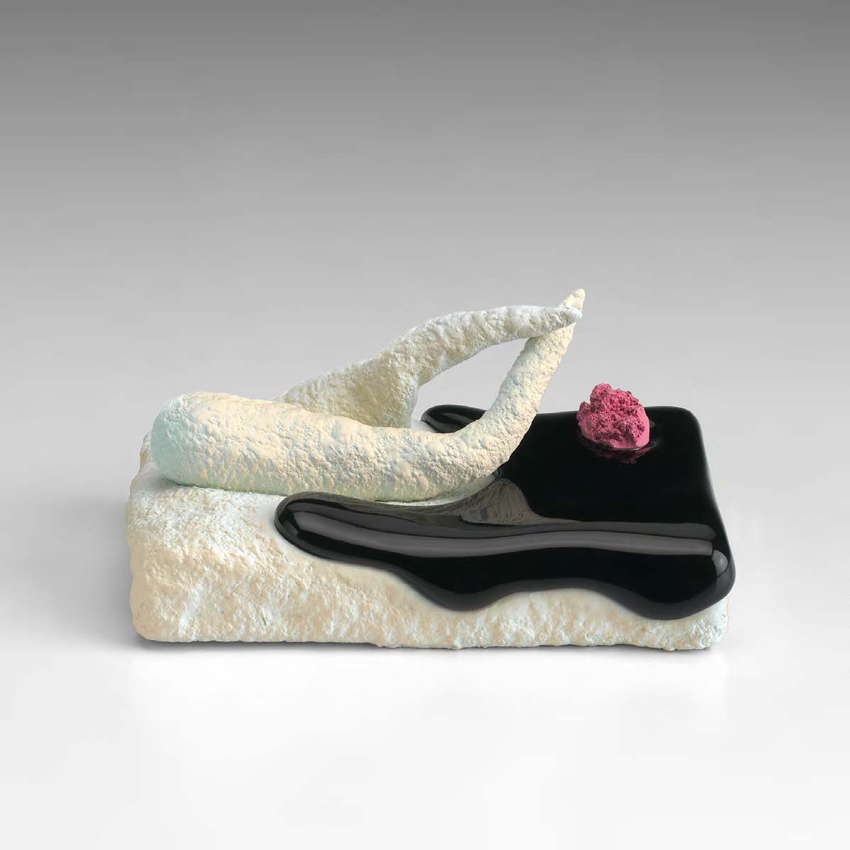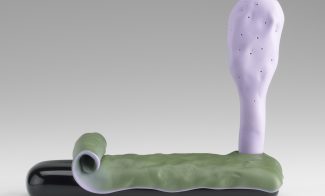Ron Nagle (Born 1939 in San Francisco) is a particularly original artist working with stunning small sculptures. A student of ceramics pioneer Peter Voulkos (who taught ceramics at Black Mountain College), Nagle participated in an important dialogue with other artists working in the medium, like Ken Price and Jim Melchert. At the beginning of his career, Nagle made funky, rough cups and vessels out of earthenware, and by the early 1960s was using low-fire, slip-casting techniques to make smoother surfaces and bring into play the luminous colors that would become his calling card. He also began gluing elements together, disrupting the purity of ceramics and allowing more play and flexibility with form. In vessels no higher than a few inches, Nagle references experiences of the body and architecture in a vocabulary that draws on abstract expressionism, minimalism, and the California Light and Space movement.
Although he has been influenced by such diverse artists as Joseph Albers, Philip Guston, and Giorgio Morandi, Nagle is equally attached to popular culture: “I’m just as moved by seeing a 1934 DeSoto Airflow or by listening to ‘Waterloo Sunset’ by the Kinks as I am by most things in a museum.” In the irreverent Boston Scrambler, pocked polyurethane surfaces create a dynamic contrast with the glassiness of an adjacent porcelain finish. Like many of Nagle’s works from 2015, this one references the landscape as well as the body: tentacle-like forms evoke vegetal matter as well as limbs, and the baselike block and its liquidy cover conjure ground and water, habitat for a strange pink form. Nagle invariably imbues his work with linguistic humor. Contributing to an obvious allusion to the Boston Strangler, the word “scrambler,” in Nagle’s lexicon, is a toupee or comb-over, amusingly recasting the imagery.

